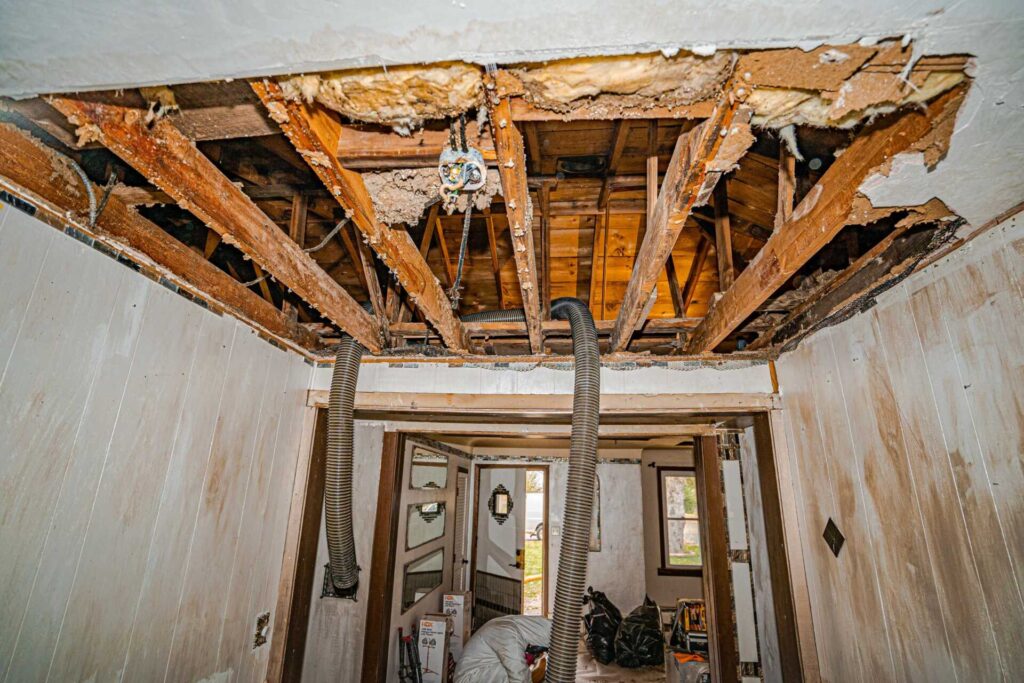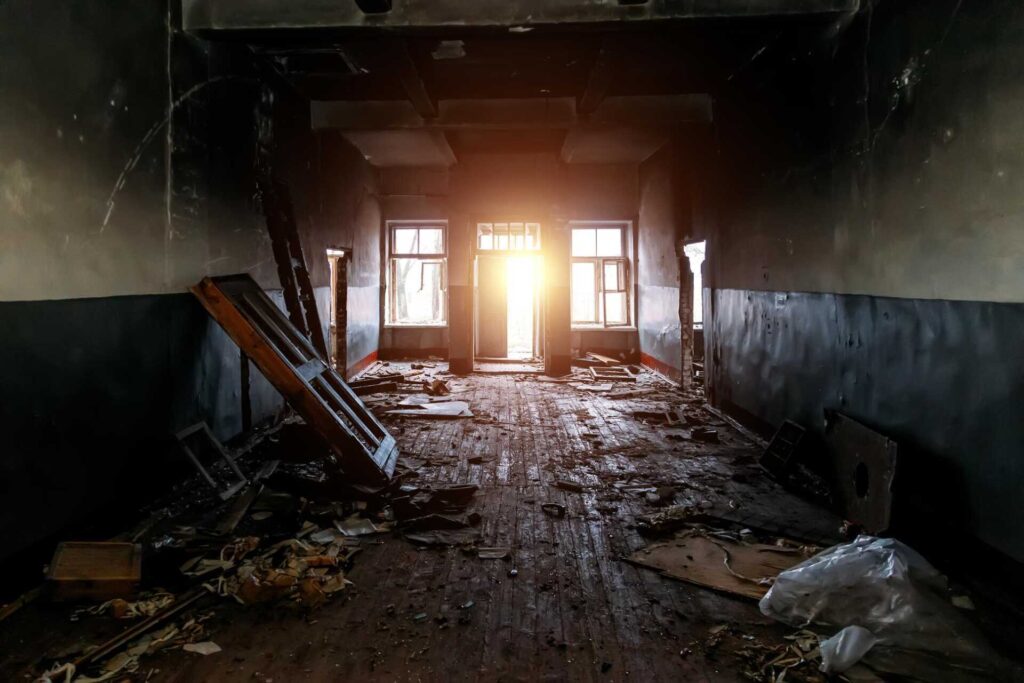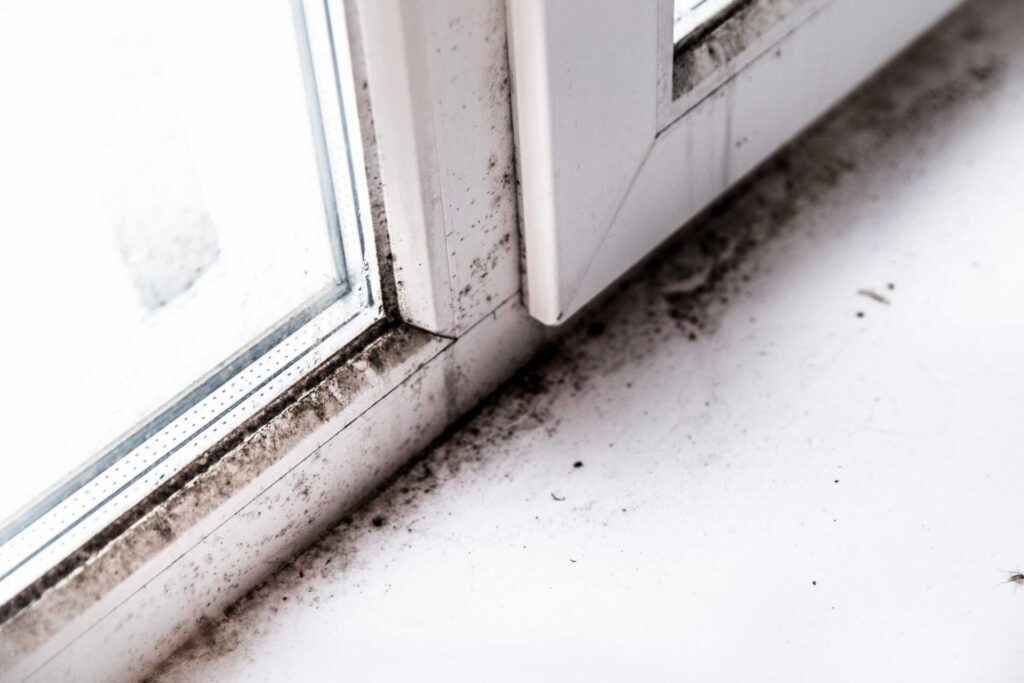
Contents
It’s often said that quick action can make or break restoration efforts after fire or water damage. While this theory holds significant weight, the effectiveness of your response hinges on the techniques you employ. Understanding the systematic approach to assess damage, remove contaminants, and restore your space is vital. What methods can you implement to guarantee a thorough recovery? Let’s explore some of the top strategies that can safeguard your property and peace of mind.
Key Takeaways
- Ensure safety first, then assess fire and water damage for visible signs and structural integrity before proceeding with restoration efforts.
- Use wet/dry vacuums for quick water removal and employ dehumidifiers to reduce humidity levels post-removal.
- Wear protective gear during fire damage cleanup to mitigate health risks from soot, smoke, and hazardous materials.
- Contain mold growth by identifying moisture sources, sealing off affected areas, and cleaning surfaces with mold-killing solutions.
- Work with professionals for thorough restoration and reconstruction to ensure safety, durability, and aesthetic consistency in your home.
Assessing the Damage
How do you begin to evaluate damage after a fire or water incident? Start by ensuring your safety and that of others.
Once you’re sure it’s safe, observe the affected areas closely. Look for visible signs of damage, like charred materials from fire or soaked walls from water. Check structural elements, including beams and flooring, as they may have weakened. Document everything with photos or notes; this will help when communicating with restoration professionals or insurance companies.
Next, evaluate the extent of damage to personal belongings. Identify items that can be salvaged and those that are beyond repair.
Pay attention to hidden areas, like behind walls or under carpets, where moisture or soot can linger. By taking a methodical approach, you’re not just evaluating damage; you’re also taking the first step toward recovery, helping yourself and others find a sense of normalcy again.
Emergency Water Removal Techniques
After evaluating the damage, it’s crucial to act quickly to remove water from the affected areas.
Every moment counts when it comes to preventing mold growth and structural issues.
Here are three effective emergency water removal techniques you can use:
- Use a Wet/Dry Vacuum: If you have one, this tool can efficiently suck up standing water from floors and carpets.
Make sure to wear protective gear!
- Mop and Bucket: For smaller areas, a mop and bucket can help you manually remove water.
This method allows for careful attention to detail.
- Dehumidifiers and Fans: After you’ve removed the bulk of the water, running dehumidifiers and fans helps dry out the environment, reducing humidity levels.
Effective Fire Damage Cleanup Strategies
While the aftermath of a fire can be overwhelming, addressing the damage promptly is essential for restoring your property and ensuring safety.
Begin by evaluating the extent of the damage—this includes structural integrity and hazardous materials like soot and smoke. Wear protective gear, as these particles can pose health risks.
Next, remove any charred materials and debris. This not only helps in reducing odors but also prevents further deterioration. Use specialized cleaning agents to tackle smoke residue on surfaces, and consider an ozone generator to eliminate lingering smells.
Don’t forget about the importance of ventilation; open windows and use fans to circulate fresh air.
Finally, document the damage for insurance purposes, as this can aid in your recovery process.
Mold Remediation Processes
Since mold can develop rapidly in damp environments, it’s crucial to act swiftly once you notice signs of infestation. Ignoring it can lead to health issues and structural damage.
Here’s a clear process to tackle mold remediation effectively:
Identify the Source: Locate the moisture source causing the mold growth. Fix leaks and improve ventilation to prevent recurrence.
Contain the Area: Seal off the affected space to prevent spores from spreading. Use plastic sheeting and make certain proper ventilation to keep you safe.
Remove and Clean: Dispose of contaminated materials, like drywall or insulation. Clean hard surfaces with a mold-killing solution, ensuring you wear protective gear.
Restoration and Reconstruction Methods
When you face the aftermath of fire or water damage, restoring your space involves a careful blend of techniques and materials tailored to the specific destruction.
Begin with a thorough assessment—identifying structural damage, compromised electrical systems, and hidden moisture. You’ll want to remove damaged materials like drywall and flooring, making sure you eliminate any lingering hazards.
Next, focus on drying and dehumidifying the area to prevent mold growth, using industrial-grade equipment when necessary.
Once the space is dry, you can move to reconstruction, incorporating quality materials that match your home’s aesthetic.
Consider consulting professionals for the rebuilding process; their expertise can help guarantee durability and safety.
Finally, don’t forget about emotional healing—redecorating your space with items that reflect your personality can help restore a sense of belonging.
Wrap-Up
In fire and water damage restoration, remember that “an ounce of prevention is worth a pound of cure.” By promptly evaluating the damage and employing effective techniques, you can minimize further destruction and protect your home. Whether it’s removing water or addressing soot, each step you take helps restore safety and comfort. Don’t hesitate to reach out to professionals for reconstruction, ensuring everything’s up to code and aesthetically pleasing, allowing you to regain peace of mind in your space.

